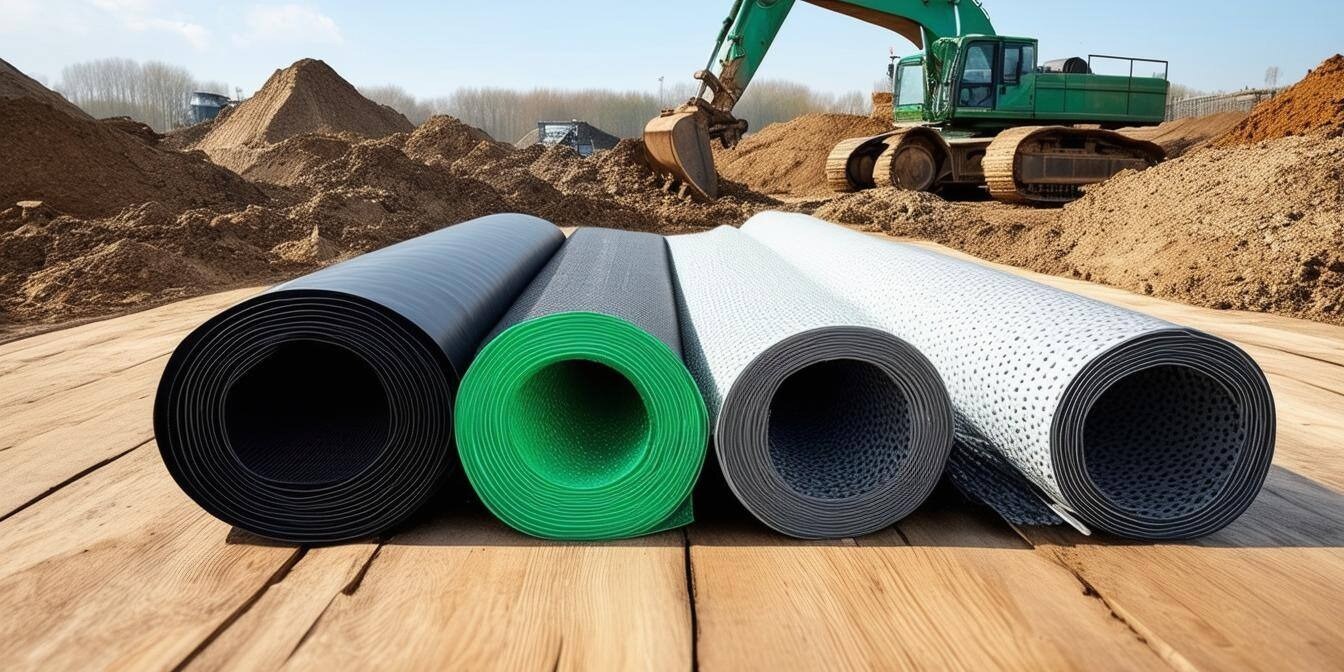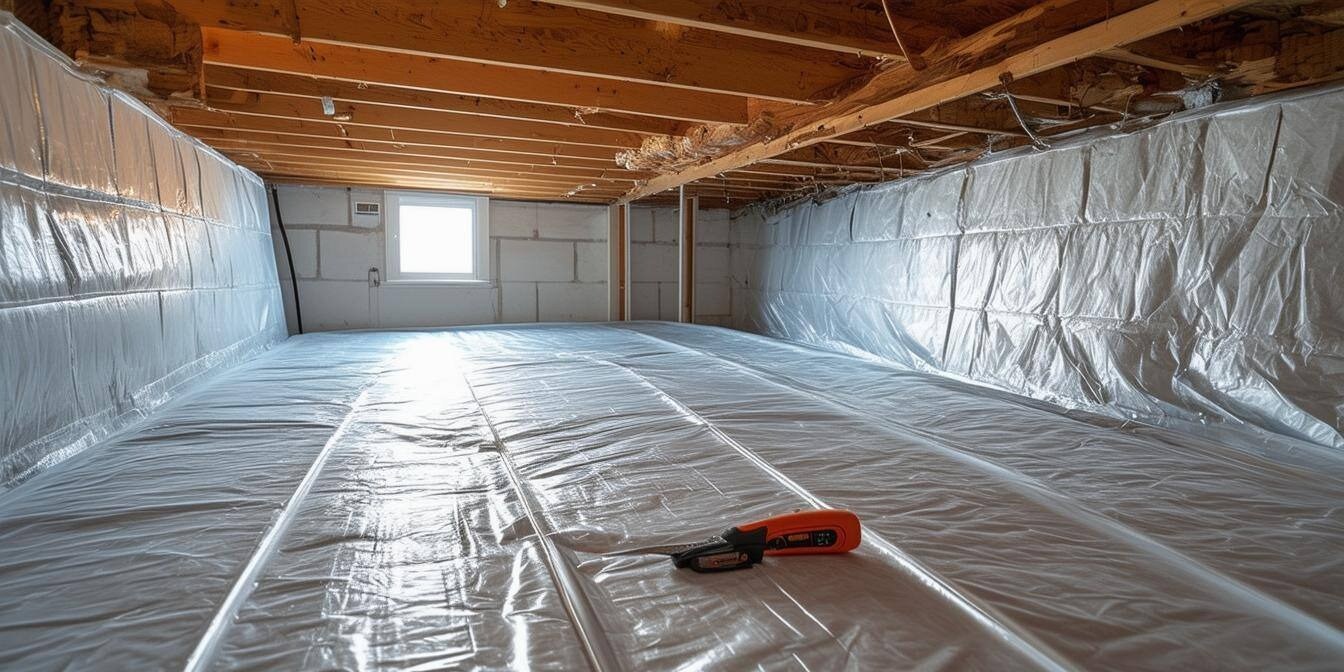High-Density Polyethylene (HDPE) geomembranes are widely used for containment, environmental protection, and industrial applications due to their chemical resistance, durability, and impermeability. However, selecting and maintaining an HDPE liner requires an understanding of:
- How resistant HDPE is to chemicals.
- The difference between smooth and textured HDPE geomembranes.
- How to test the integrity of an installed liner.
This guide will explore these topics to help engineers, project managers, and contractors choose and maintain the best HDPE geomembrane for their needs.
Are HDPE Geomembranes Resistant to Chemicals?
Yes! HDPE geomembranes are highly resistant to a broad range of chemicals, making them ideal for hazardous waste containment, chemical storage, and industrial applications.
Why HDPE Has Excellent Chemical Resistance
✔ Non-Polar Material – HDPE has low permeability, meaning it doesn’t easily absorb chemicals or degrade.
✔ Resistant to Acids & Alkalis – HDPE is impermeable to most acids, bases, and solvents, making it perfect for landfills and chemical plants.
✔ Corrosion-Proof – Unlike metal or concrete, HDPE does not corrode when exposed to harsh chemicals or wastewater.
Industries That Rely on HDPE’s Chemical Resistance
1. Landfills & Waste Containment
✔ Prevents leachate (toxic liquid waste) from contaminating soil and groundwater.
✔ Complies with EPA and environmental safety regulations.
2. Chemical Processing & Industrial Storage
✔ Used in chemical plants, refineries, and hazardous waste sites to contain spills.
✔ Resistant to petroleum, solvents, and industrial acids.
3. Mining Operations
✔ Essential for heap leach pads, tailings ponds, and chemical processing sites.
✔ Protects the environment from cyanide, sulfuric acid, and other extraction chemicals.
4. Wastewater Treatment Plants
✔ Prevents sewage and industrial waste from leaking into the environment.
✔ Resistant to bacteria, biofilms, and corrosive waste compounds.
✔ Conclusion: HDPE geomembranes provide unmatched chemical resistance, making them the gold standard for hazardous waste containment.
What Is the Difference Between Smooth and Textured HDPE Geomembranes?
HDPE geomembranes come in two primary surface types: smooth and textured. Each has distinct advantages depending on the project’s needs.
| Type | Best For | Key Benefits |
|---|---|---|
| Smooth HDPE | Basins, reservoirs, industrial storage | Lower friction, easy to clean, impermeable |
| Textured HDPE | Steep slopes, landfill covers, mining applications | Higher friction, improved stability on slopes |
Smooth HDPE Geomembranes: Features & Applications
✔ Lower Coefficient of Friction – Reduces surface resistance, making it easier to install.
✔ Easier to Clean & Maintain – Ideal for water storage, agricultural ponds, and secondary containment systems.
✔ Best for Lining Tanks & Industrial Facilities – The smooth surface makes it easy to weld and install.
Textured HDPE Geomembranes: Features & Applications
✔ Increased Surface Friction – Prevents liners from sliding in steep slopes and high-load applications.
✔ Ideal for Landfills & Mining – Provides superior slope stability in heap leach pads and landfill capping systems.
✔ Better Soil Retention – The rough surface locks soil in place, preventing erosion.
✔ Conclusion: Smooth HDPE is best for water containment, while textured HDPE is necessary for slope stability in landfill and mining applications.
How Do You Test the Integrity of Installed HDPE Geomembranes?
Proper testing ensures HDPE liners are free of leaks, weaknesses, and defects before the project is finalized. The most effective geomembrane testing methods include:
1. Vacuum Box Testing
✔ Best For: Detecting seam leaks and small punctures.
✔ How It Works:
- A vacuum box is placed over the seam and sealed.
- Soap solution is applied, and the box creates negative pressure.
- If air bubbles form, there is a leak that needs repairing.
Why It’s Used:
🔹 Quick & effective for small-scale projects.
🔹 Ideal for verifying seam quality after welding.
2. Air Pressure Testing (For Double-Wedge Seams)
✔ Best For: Checking seam integrity in overlapping HDPE sheets.
✔ How It Works:
- Two overlapping layers are sealed with a small air channel between them.
- Air is pumped in, and pressure is monitored over time.
- If pressure drops, there’s a leak that needs fixing.
Why It’s Used:
🔹 Provides high-accuracy seam testing.
🔹 Required for critical containment applications like hazardous waste sites.
3. Electrical Leak Location Surveys
✔ Best For: Detecting leaks in large-scale landfills, ponds, and reservoirs.
✔ How It Works:
- A low-voltage electric current is passed through the liner.
- If a leak is present, electrical conductivity increases, pinpointing the exact location of the breach.
Why It’s Used:
🔹 Highly accurate for detecting leaks in large containment areas.
🔹 Essential for ensuring environmental compliance in regulated industries.
4. Spark Testing (For Factory Seams)
✔ Best For: Testing prefabricated HDPE panels before installation.
✔ How It Works:
- A conductive wire is embedded in the geomembrane.
- A high-voltage spark detector is passed over the seam.
- If a spark occurs, the seam is defective and needs repair.
Why It’s Used:
🔹 Ensures high-quality factory-fabricated panels.
🔹 Reduces the risk of installation defects.
Final Thoughts: Choosing the Right HDPE Geomembrane & Ensuring Quality
✔ HDPE geomembranes provide superior chemical resistance, making them ideal for hazardous waste containment and industrial applications.
✔ Smooth HDPE is best for containment ponds and reservoirs, while textured HDPE is required for slope stability in landfills and mining.
✔ Proper testing, including vacuum box testing, air pressure testing, and electrical leak detection, ensures that the liner is installed correctly and free of defects.
Get the Best HDPE Geomembrane for Your Project!
Looking for high-quality HDPE liners with tested performance? We provide:
✅ HDPE liners in smooth & textured finishes
✅ Geomembrane testing services for installation integrity
✅ Expert recommendations for landfills, mining, and industrial containment
📞 Contact us today to find the right HDPE solution for your project! 🏗️💧





 Excess moisture in a crawl space or basement can lead to mold growth, structural damage, and poor indoor air quality. The best way to prevent these issues is by installing a moisture control system—but should you use a vapor barrier or a moisture barrier?
Excess moisture in a crawl space or basement can lead to mold growth, structural damage, and poor indoor air quality. The best way to prevent these issues is by installing a moisture control system—but should you use a vapor barrier or a moisture barrier?

